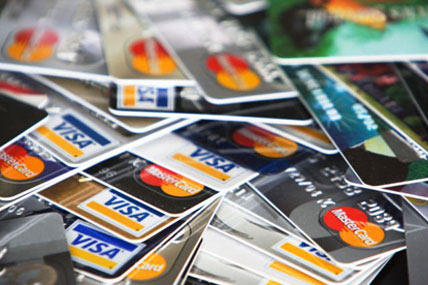Despite reports to the contrary, US consumers haven’t actually paid down any credit card debt since the Great Recession began. We’ve actually added more than $82 billion to our tab since 2008, bringing the grand total that we owe creditors to an astounding $833.8 billion, or $6,980 per household. Even more worrisome, Card Hub data indicates that if current credit card debt levels rise as little as 15-20%, there could be widespread consumer defaults and perhaps even the second act to a double dip recession.
We’ve all heard in recent years how vital our country’s economic stability is to our overall safety and well-being – which the military community is obviously deeply invested in – so we all must do our part to right the ship moving forward.
To do so we must first rectify a pair of significant flaws in our collective consumer mindset that have become all too apparent in recent years: 1) The mistaken belief that spending can revert to pre-recession levels; and 2) The blurring of the line between luxuries and necessities.
Post-Recession Spending: A New Normal
After paying down more than $1 billion in outstanding credit card balances in 2009, we’ve unfortunately reversed course in the years since. We first dipped our toes back into the debt pool with a $5 billion build-up in 2010, then dove right into the deep end, racking up $45.9 billion and $36.2 billion in new balances during 2011 and 2012, respectively.
It’s therefore obvious that we as a society believe the economy is back to “normal” – at least to a certain extent – and have yet to accept the fact that pre-recession spending was a product of the housing bubble. In other words, since the fallout from the housing market collapse has spread throughout industries and across walks of life, there are very few of us who can afford to revert back to our old ways, especially since those old ways were defined by a perilous and habitual reliance on debt.
As a result, we must re-approach spending in terms of our current income, not what we grew accustomed to buying during “bubblicious” times.
Luxury vs. Necessity
When you’re habitually spending more than you bring in, something obviously has to go, and the 23% of people who say they need cable or satellite TV, according to a survey from the Pew Charitable Trusts, may know where to start. The same could be said for the 10% of folks who report having to have a flat screen TV and the 4% who cherish iPods.
The true importance of those statistics isn’t limited to flat-screens and iPods, however. Rather, it speaks to the gradually fading distinction between luxury and necessity, and our unfortunate tendency to buy what makes us happy in the short-term without paying much attention to long-term consequences. We don’t need to give up all of our creature comforts, but we do need to trim the fat like a drill instructor with a soft recruit.
Tips for Sustainable Spending
Armed with a new outlook, it’s time to begin chipping away at existing debt while making sure to stay out of it moving forward.
So, determine your monthly after-tax income, rank your expenses in order of importance, and cut what you can’t afford to keep. In doing so, don’t forget to account for debt payments and emergency fund contributions. The latter is actually the more immediate priority because what good is having a balance equal to zero if you’re just a bump in the road away from finding yourself behind the eight ball once again?
Your goal should be to contribute a bit every month so that you have about a year’s after-tax income saved up, allowing you to withstand a prolonged period of unemployment should it arise.
When it comes to paying down amounts already owed, consumers who managed to maintain above-average credit throughout the downturn have a powerful ally: 0% balance transfer credit cards. Trends show that these offers have become about as appealing as they’re going to get, and though the average 0% term lasts for just over 10.5 months, you can find those that provide a respite from interest for as long as a year and a half. A calculator will help you determine which particular card offers the most savings in the context of your individual situation, but the average household stands to save somewhere in the neighborhood of $1,000 on interest payments while becoming debt free months earlier than expected if they play their cards right.
Adhering to an overall strategy known as the Island Approach will also help you supplement your savings and establish a warning system of sorts for future overleveraging, regardless of your current credit standing. The basic idea behind the Island Approach is that by isolating different types of expenses on different financial products (as if they’re individual islands), you can garner a collection of attractive rates and rewards unattainable with any single account. This could entail, for example, using a 0% credit card to lower the cost of existing debt and a rewards card to subsidize everyday spending. Because you should always be able to pay off everyday expenses during the billing period in which you make them, the onset of interest on your everyday spending account will signal the need to cut back.
That’s not the only way to make sticking to your newly-defined budget easier either. You could also ask your card issuer to lower your monthly spending limit so that it equals your budgeted amount, establish automatic withdrawals from a bank account, or simply cut up your cards while keeping the accounts open so as to remove temptation yet still benefit in terms of credit building.
Ultimately, regardless of how exactly you go about whipping your finances into shape, it’s important that you simply get the job done. Considering the discipline and toughness for which military families are known, I have few doubts about the ultimate success of this mission.












